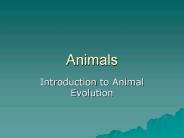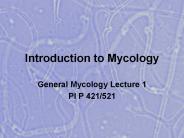Heterotrophic PowerPoint PPT Presentations
All Time
Recommended
Title: Photosynthetic Prokaryotes Chapter 14 Author: Jeffery Hughey Last modified by: Hartnell Created Date: 6/28/2004 5:07:39 PM Document presentation format
| PowerPoint PPT presentation | free to download
By Abdul Manap Mahmud Introduction Definitions of heterotrophic on the Web: Refers to organisms, such as animals, that depend on preformed organic molecules from the ...
| PowerPoint PPT presentation | free to download
Title: WAS Orlando 1-24-01 AES Presentation Subject: Biofilter Kinetics Author: James M. Ebeling Keywords: Biofilter, Beadfilters, Kinetics Description
| PowerPoint PPT presentation | free to download
Kingdom Protista: Algae and Heterotrophic Protists Chapter 15 Heterotrophic Phyla Oomycota- water molds. Myxomycota- plasmodial slime molds. Dictyosteliomycota ...
| PowerPoint PPT presentation | free to view
Heterotrophic Bacterial Communities Associated with Desert Gypsum Rock. By Leigh Ann Beasley ... Dr. Braun. Dr. Clower. Dr. Whittman. Chris Lasher. Questions? ...
| PowerPoint PPT presentation | free to view
Saprophytic and engulf bacteria, yeast, fungal spores. Food reserve- glycogen. ... Photosynthetic Prokaryotes Chapter 14 Author: Jeffery Hughey Last modified by:
| PowerPoint PPT presentation | free to view
Sand Dollar. Pacific Oyster. www.manandmollusc.net. Peanut Worm ... There are many diverse groups of protists to be discovered by basic exploratory research. ...
| PowerPoint PPT presentation | free to view
Secondary metabolites and other biologically useful compounds. Genetic Diversity. Cryptosporidium ... Marine Invertebrate Guts. Nutritious environment for heterotrophs ...
| PowerPoint PPT presentation | free to view
... to be the more definitive sign of overyielding (Hector et al, 2002) ... Hector, Andy et al. 'Overyielding in grassland communities: testing the sampling ...
| PowerPoint PPT presentation | free to view
Title: - Heterotrophic Plate Count Subject: Author
| PowerPoint PPT presentation | free to download
Taxonomy and Classification The Six Kingdoms Archaebacteria Prokaryotic Unicellular Reproduces asexually Heterotrophic, but sometimes autotrophic Heterotrophic ...
| PowerPoint PPT presentation | free to download
Animal Diversity 2 Multicellular, eukaryotic, heterotrophic organisms that feed by INGESTION
| PowerPoint PPT presentation | free to view
Classification Biology I Kingdom Animalia All eukaryotic, multicellular, heterotrophic, motile (most) organisms Common Phyla: Porifera (sponges, corral) Cnidaria ...
| PowerPoint PPT presentation | free to view
The Kingdom ANIMALS Eukaryotic cells Multicellular Heterotrophic by ingestion External Fertilization vs Internal Fertilization a. Invertebrate Chordates: Tunicates ...
| PowerPoint PPT presentation | free to view
KINGDOM ARCHEABACTERIA Unicellular Prokaryotes Extremophiles (heat, salinity, acid, etc) Autotrophic/chemosynthetic and heterotrophic DNA structure similar to ...
| PowerPoint PPT presentation | free to view
Lab 6 Various Protista Dictyosteliomycota Common name: Cellular slime molds Synonyms: Acrasiomycota (in part) Mode of nutrition: Heterotrophic: ingestive ...
| PowerPoint PPT presentation | free to view
... combining photosynthesis and heterotrophic nutrition Characteristics Protists are ... Giardia Trypanosomes Malaria Cute Paramecium Amoeba Mistaken as other ...
| PowerPoint PPT presentation | free to view
EVOLUTION OF ANIMALS CHARACTERISTICS OF ANIMALS Multicellular Eukaryotic Heterotrophic (ingestion) No cell walls Nervous & muscle tissue Sexual reproduction Hox genes ...
| PowerPoint PPT presentation | free to view
Kingdoms protista, fungi, plantae, animalia Protista Unicellular Some autotrophic-algae Some heterotrophic Mostly found in aquatic habitats Endosymbionts live ...
| PowerPoint PPT presentation | free to view
9 Phyla of the Animal Kingdom Common Animal Characteristics Multicellular (many cells) Eukaryotic (cells contain nucleus) Heterotrophic (must eat) Lack cell walls ...
| PowerPoint PPT presentation | free to view
Secondary Education Heterotrophic nutrition Heterotrophic organisms cannot make organic matter from inorganic matter. Therefore, ...
| PowerPoint PPT presentation | free to download
Chapter 11 Protists Protist Charateristics Protists unicellular or multicellular eukaryotes that may be autotrophic or heterotrophic Autotrophs are organism ...
| PowerPoint PPT presentation | free to view
CHAPTER 18 CLASSIFICATION (Taxonomy) THE SIX KINGDOMS Animalia Eukaryotic Heterotrophic Multicellular Movement Organized into tissues and organs (most animals ...
| PowerPoint PPT presentation | free to view
Animals are multicellular, heterotrophic, eukaryotes ... Keeled toucan. Linnaean Classification. Kingdom: Animalia. Phylum: Chordata. Subphylum: Vertebrata ...
| PowerPoint PPT presentation | free to download
Kingdom Animalia Animals are: Multicellular, with tissues and organ systems that perform specialized functions Eukaryotic, with no cell walls Heterotrophic
| PowerPoint PPT presentation | free to view
Animal Evolution I. Animal traits A. Heterotrophic B. Mobile C. Lack cell walls D. Possess nerve and striated muscle D. Reproduces sexually 1.
| PowerPoint PPT presentation | free to view
Kingdom Fungi What are Fungi? Fungi are NOT PLANTS Study of fungi = mycology Defined as a single or multi-celled eukaryote with heterotrophic, absorptive nutrition ...
| PowerPoint PPT presentation | free to download
Facultative heterotrophic-use carbon for the formation of new biomass ... Facultative Heterotrophic Metabolism (Anoxic) ---Bacteria--- Energy. Synthesis ...
| PowerPoint PPT presentation | free to view
Animals Introduction to Animal Evolution What is an Animal? Multicellular, heterotrophic, eukaryotes Cells lack cell walls, held together by structural proteins ...
| PowerPoint PPT presentation | free to download
Kingdom Protista Chapter 20 Kingdom Protista Catch all Eukaryotes Unicellular and Multicellular Autotrophic or heterotrophic Some have cell walls Many have ...
| PowerPoint PPT presentation | free to view
Introduction to Mycology General Mycology Lecture 1 Pl P 421/521 What is a fungus? A eukaryotic, heterotrophic organism devoid of chlorophyll that obtains its ...
| PowerPoint PPT presentation | free to download
Porifera Rope Sponges Question #1 Which of the following characteristics makes sponges unique among other animals? They are multicellular. They are heterotrophic.
| PowerPoint PPT presentation | free to view
Introduction to Animals Essential Questions: What makes an animal an animal? How are animals classified? Kingdom Animalia Eukaryotic Heterotrophic Multicellular ...
| PowerPoint PPT presentation | free to view
Oceans comprise _____ % of the earths surface The largest and deepest ocean is the? Photosynthesis is _____ % efficient Self feeding = Heterotrophic means?
| PowerPoint PPT presentation | free to download
Plants and Inorganic Nutrients Animals Heterotrophic Plants - Autotrophic What is plant nutrition? Organic nutrition photosynthesis Inorganic nutrition ...
| PowerPoint PPT presentation | free to download
Overview of the Animal Kingdom CSCOPE CSCOPE Animals are Multicellular Eukaryotic Heterotrophic Cells lack cell walls CSCOPE There are 9 Major Phyla Porifera ...
| PowerPoint PPT presentation | free to view
IV. Fungi KNOW RED STUFF A. Overview 1. General Characteristics - multicellular eukaryotes - heterotrophic - absorptive nutrition: excrete enzymes into environment ...
| PowerPoint PPT presentation | free to download
EOC BY ESSENTIAL STANDARD. How did organisms like the euglena, which are heterotrophic and autotrophic change the classification system? Protists fall into 3 ...
| PowerPoint PPT presentation | free to view
Welcome to Bacteria! Archaebacteria Live in very extreme conditions (no oxygen, no sun, very high heat, salty regions. In most conditions, are usually heterotrophic ...
| PowerPoint PPT presentation | free to view
Kingdom Protista protozoans, algae, molds, and mildews Protozoans Heterotrophic Unicellular Animal-like (-zo-) Phylum Rhizopoda Move by pseudopodia Example is Amoeba ...
| PowerPoint PPT presentation | free to download
CLASSIFICATION OF ORGANISMS THE 6 ... are classified by how they get their food Autotrophic Heterotrophic Decomposers Kingdom Bacteria Some bacteria move ...
| PowerPoint PPT presentation | free to download
Animal Characteristics 1. Eukaryotes 2. Multicellular 3. No cell walls or chloroplasts 4. Heterotrophic 5. Many types of movement a. Sessile: don t move (barnacles ...
| PowerPoint PPT presentation | free to download
Chapter 31 Chapter 31 ~ Fungi Fungi 1)Eukaryotic 2)Heterotrophic by absorption (exoenzymes) What does this mean? Decomposers /(saprobes), parasites (predators ...
| PowerPoint PPT presentation | free to download
Stream Animals & the Heterotrophic Food Chain Processing of Organic Matter In fall, leaf debris from overhanging deciduous trees accumulates in the stream Flowing ...
| PowerPoint PPT presentation | free to view
Unit ( 9 & 10: Microbes) Click to begin Correct Which of the following is true of all algae (plant-like protists)? A.) eukaryotic B.) unicellular C.) heterotrophic D ...
| PowerPoint PPT presentation | free to view
The Animal Kingdom! What we have in common Multicellular Eukaryotic Heterotrophic (consumers our bodies don t produce our own foods) Mobile or have the ...
| PowerPoint PPT presentation | free to download
FUNGI An Overview Characteristics of Fungi Eukaryotic Nonphotosynthetic ( heterotrophic) Most are multicellular Most are microscopic molds or yeasts The study fungi ...
| PowerPoint PPT presentation | free to view
The Kingdom Fungi Section 21-1 What Are Fungi? Eukaryotic Heterotrophic: digest food outside of their bodies, then absorb it Cell walls made of chitin Structure ...
| PowerPoint PPT presentation | free to download
Kingdoms Review * * * * * * * * * * * * * * * * * * * * * * * * * * * * * * * * * * * * * * * * * Protists & Fungi 200 - Answer Eukaryotic Heterotrophic Mostly ...
| PowerPoint PPT presentation | free to view
INTRODUCTION TO THE ANIMAL KINGDOM Common Patterns and Development in Animals What Are Animals? Animals are multicellular Eukaryotic Heterotrophic by ingestion ...
| PowerPoint PPT presentation | free to view
Some heterotrophic protists obtain food by absorption ... Some (like Euglena) can alternate between autotrophism and heterotrophism ...
| PowerPoint PPT presentation | free to view
Carbon Dioxide in the atmosphere has been steadily rising since regular ... Autotrophic. respiration. Carbon. allocation. Turnover. Heterotrophic. respiration ...
| PowerPoint PPT presentation | free to download
Kingdom Animalia Characteristics of Animals Eukaryotic cells have a nucleus and membrane bound organelles Heterotrophic must ingest their food Diploid two ...
| PowerPoint PPT presentation | free to download
Filters are an aquarium's life support system. Protists are unicellular, carry-on life processes, via diffusion require no filtration. Plants are autotrophic, produce O2 as a waste product. Hence, they require no filtration. Animals are heterotrophic, produce CO2, ammonia, and faces as waste products. These become toxic, in large amounts when dissolved in water. Hence, animals require a FILTER.
| PowerPoint PPT presentation | free to download
Introduction Fungi Fungus Mycology Mykes = Mushroom Medical mycology 5 kingdom Monera Plant Animal Fungi Protista Eukaryote & Heterotrophic Structure & Ultra ...
| PowerPoint PPT presentation | free to download
Dinoflagellates Dinoflagellates Possess 2 flagella Cell wall composed of cellulose Autotrophic and heterotrophic abilities Some ability to migrate vertically in ...
| PowerPoint PPT presentation | free to view
























































